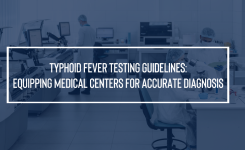Blog
Anesthesia Efficacy: The Potential of i-STAT as a Monitoring Device
Anesthesia Monitoring Devices, vital for precision and real-time data in anesthesia management, are constantly sought after by providers aiming for optimal patient care. The emergence of i-STAT as a monitoring device offers a promising solution in this pursuit. A recent study published in BMC Anesthesiology sheds light on the transformative potential of these devices, providing invaluable insights for anesthesiologists globally.
Revolutionizing Anesthesia Monitoring with i-STAT
i-STAT, a handheld point-of-care testing system, has garnered attention for its versatility and accuracy in various clinical settings. This study delves into its application within anesthesia, examining its efficacy in real-time monitoring and its impact on patient outcomes.
Key Findings:
Enhanced Monitoring Capabilities: The i-STAT provide comprehensive data on crucial parameters such as blood gases, electrolytes, and hemoglobin levels. This real-time information empowers anesthesiologists to make informed decisions promptly, ensuring precise titration of anesthetic agents and fluid management.
Improved Patient Safety: By facilitating continuous monitoring, the i-STAT enables early detection of physiological imbalances or adverse events during anesthesia. This proactive approach enhances patient safety by minimizing the risk of complications and optimizing perioperative care.
Streamlined Workflow: The portability and user-friendly interface of the i-STAT device streamlines workflow in busy operating rooms. With rapid results available at the bedside, healthcare teams can efficiently adjust treatment strategies and maintain procedural efficiency.
Practical Implications:
Tailored Anesthesia Management: Integrating the i-STAT as a monitoring tool into anesthesia protocols allows for personalized patient care. By monitoring individual responses to anesthesia in real-time, clinicians can tailor interventions to optimize outcomes and minimize adverse events.
Resource Optimization: The ability to obtain immediate results with i-STAT device reduces the need for laboratory testing and turnaround time. This not only conserves resources but also expedites clinical decision-making, particularly in emergent situations.
Continuous Quality Improvement: Utilizing the i-STAT facilitates data-driven quality improvement initiatives in anesthesia practice. By analyzing trends and outcomes associated with real-time monitoring, institutions can refine protocols and enhance overall patient care standards.








